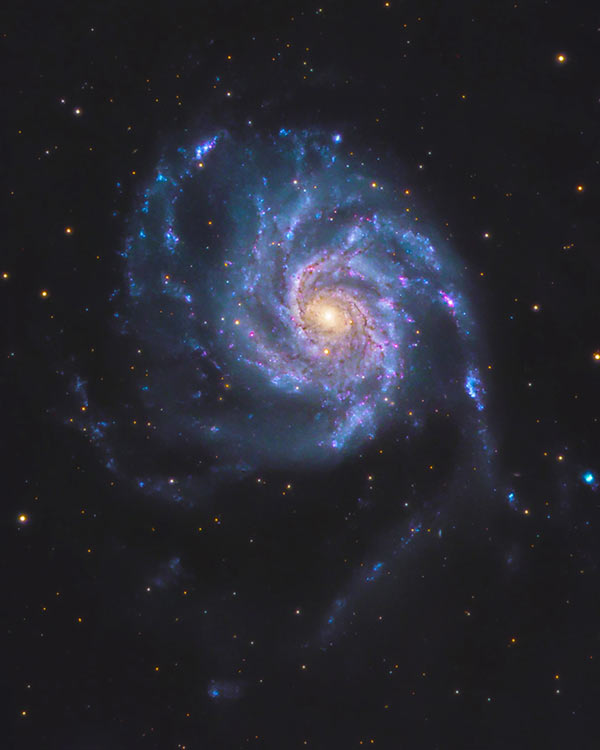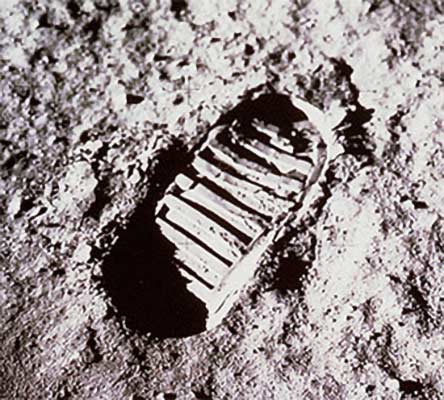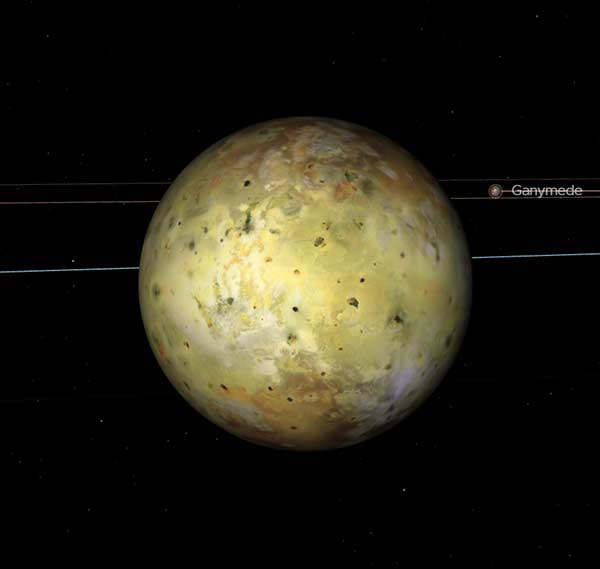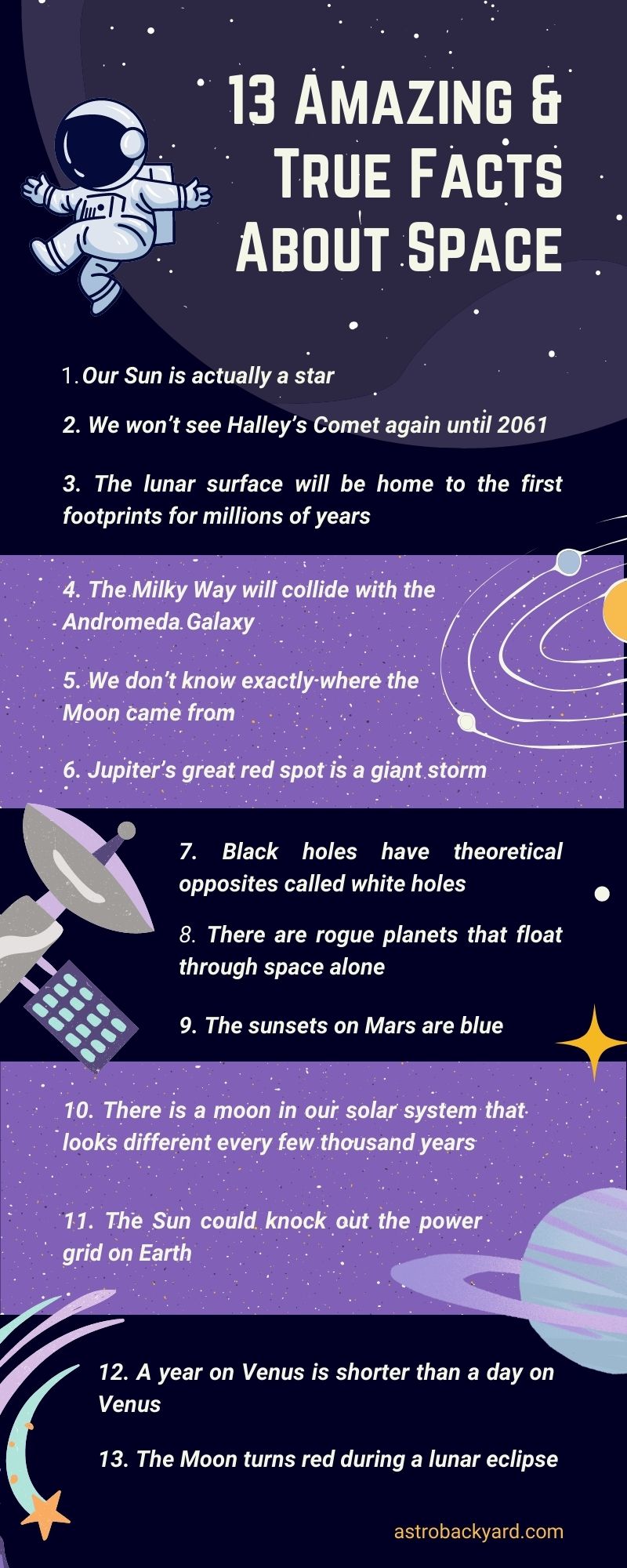13 Amazing Facts About Space
Here are 13 facts about space that may just blow your mind. If you are new to the field of astronomy, this article should provide a fascinating, quick overview of some of the most amazing things in our universe. Outer space offers an endless amount of information to discover and learn throughout your life.
As a full-time astrophotographer, it should come as no surprise to you that I think the topic of space and astronomy, in general, is absolutely fascinating. Thinking about the massive size of the universe and the billions of stars, galaxies, nebulae, and planets within it is nearly incomprehensible to me.
I wanted to create a collection of some of my favorite facts about astronomy and space that are especially interesting to me, and hopefully, you too. I believe this resource is a great way for kids to learn more about space, and potentially spark a new passion for the night sky and the field of astronomy.
On this website, I try to cover all things astronomy, from the constellations in the night sky to the meaning of astronomical twilight. The truth is, photographing the night sky from my backyard has opened my eyes to the overall beauty and wonder of our universe.
For those looking to learn more, there are an unlimited amount of interesting facts about space on the official NASA website, and the NASA Space Place information hub. I also recommend joining your local astronomy club, and attending meetings to meet people that are just as excited about space as you are!
Without further ado, let’s get to the list of random fun facts about space that you can discuss with your friends the next time you get together.
- Our Sun is actually a star
- We won’t see Halley’s Comet again until 2061
- The lunar surface will be home to the first footprints for millions of years
- The Milky Way will collide with the Andromeda galaxy
- We don’t know exactly where the Moon came from
- Jupiter’s great red spot is a giant storm
- Black holes have theoretical opposites called white holes
- There are rogue planets that float through space alone
- The Sun could knock out the power grid on Earth
- There is a moon in our solar system that looks different every few thousand years
- Mars’ sunsets are blue
- A year on Venus is shorter than a day on Venus
- The Moon turns red during a lunar eclipse
The Pinwheel Galaxy in Ursa Major. Photo by Trevor Jones.
1. Our Sun is actually a star
Can you name the closest star to Earth? It may seem like a trick question, but it’s actually the Sun.
While our Sun is extremely important to life on Earth, and may seem extraordinary to us, it is actually a very ordinary star in terms of the universe.
Stars are giant objects, mainly made of hydrogen and helium, that produce light and heat from internal nuclear forces.
More simply, a star is a giant ball of gas held together by its own gravity with nuclear reactions at its core. Our sun is classified as a main sequence G-type star.
Stars are the building blocks of galaxies. While we can never count all the stars in the universe, astronomers estimate that there are approximately 300 billion stars in our Milky Way galaxy alone.
There are billions of galaxies (with many different types) in our universe, each with millions to billions of stars.
Our Sun, captured by NASA’s Solar Dynamics Observatory on June 20, 2013. NASA/SDO.
2. We won’t see Halley’s Comet again until 2061
Comets can be thought of as space snowballs. They formed millions of years ago during the formation of our solar system. Like planets, comets orbit the Sun, however, their orbits are very large, often reaching past the orbits of many planets.
This is why we only see comets every now and again. Halley’s comet was last seen in 1986 and won’t be seen again until 2061.
Although I was technically alive in 1986 to see Halley’s comet, I was only 2-years old, and I think my parents forgot to let me know about it. The best comet I have ever seen in my lifetime was comet Neowise, in the summer of 2020.
A picture of Halley’s Comet. NASA Blogs
3. The lunar surface will be home to the first footprints for millions of years
On Earth, tracks from humans and animals do not last long. We have an atmosphere that gives us winds and weather. The Moon has no atmosphere. This means that there is no weather or water to erode the footprints the astronauts left on the Moon.
Unless there is an impact on the Moon nearby the Apollo landing site that blows up dust from the surface of the Moon, the footprints and the spacecraft prints will be there for millions of years.
The first footprints on the Moon will be there for a million years. NASA, Apollo 11.
4. The Milky Way will collide with the Andromeda galaxy
While galaxies seem far apart, many are relatively close to each other and will collide. In 4 billion years, our Milky Way galaxy will collide with our neighboring Andromeda Galaxy.
Computer simulations predict that it will take another 2 million years after the initial collision for our two galaxies to fully merge into one new galaxy.
The Andromeda Galaxy. Photo by Trevor Jones.
5. We don’t know exactly where the Moon came from
There are a few abnormalities about our Moon that make astronomers question how it got here. Because of this, we do not know exactly where the Moon came from but there are many theories. The leading theory and the most widely accepted is the Great Impactor Theory.
This theory suggests that a large object, about the size of Mars, impacted Earth soon after the solar system formed.
This impact caused large amounts of heated material to be ejected into space by both the Earth and the colliding object, called Theia. Eventually, this ejected material collected and formed our Moon.
The moon in the evening sky. Photo by Trevor Jones.
Related Post: Understanding Moon Phases
6. Jupiter’s great red spot is a giant storm
Jupiter is a gas giant and may be one of the most spectacular-looking planets. Its outer atmosphere is made up of mainly hydrogen and helium with small amounts of other elements. Clouds of these elements have varying shades of white, orange, brown, and red.
These clouds can be seen in bands caused by winds rotating around the planet at different rates. Jupiter’s most recognizable feature, its giant red spot, is actually a storm larger than Earth.
Though we have seen the great red spot for as long as we have been observing Jupiter, the spot is actually shrinking. While many things could change and affect the growth of this storm, if it continues to shrink it could disappear in the next 20 years according to NASA.
The Planet Jupiter with the Great Red Spot visible. Photo by Trevor Jones.
Related Post: 10 Interesting Facts About Jupiter
7. Black holes have theoretical opposites called white holes
Black holes are known for their immense gravitational pull, so powerful that even light can’t escape their grasp.
There is a balance to the universe in terms of forces, the exchange of energy, and many particles and objects. So is there a counterpart to a black hole? Yes, in theory.
White holes are the theoretical opposite of black holes and are purely hypothetical objects. They are theorized to operate in the opposite way to a black hole.
If nothing can escape a black hole, then nothing can enter a white hole. Could white holes be lurking somewhere in the universe waiting to be discovered? Or could they be what’s on the other side of a black hole?
8. There are rogue planets that float through space alone
While it would be easy to assume that other planets all orbit stars like the ones in our solar system, this is not always the case. Out in our galaxy, there are what are known as rogue planets.
These planets do not orbit any stars but are floating through space alone orbiting the galactic center.
These elusive cosmic objects have masses that are comparable to the planets in our solar system, but they roam freely on their own instead of orbiting a star. New rogue planets are being discovered each year.
Artist’s conception of a Jupiter-size rogue planet. NASA/JPL-Caltech.
9. The Sun could knock out the power grid on Earth
We often forget just how powerful our Sun really is. Sure, we can feel it on a hot summer day, but this giant ball of gas and plasma is volatile.
The Sun is constantly shooting charged particles through the solar system. Often, Earth’s magnetic field protects us from these charged particles and turns them into auroras, or the Northern Lights.
But the Sun is home to the most powerful explosion in our solar system, a coronal mass ejection. Coronal mass ejections are giant bubbles of radiation and charged particles that explode off the solar surface.
A powerful enough coronal mass ejection would not just interact with our magnetic field, but it could snap magnetic field lines.
This would cause large amounts of these charged particles to make it down to the Earth and could potentially shut down some, if not all, the power grids on Earth.
A coronal mass ejection as seen by LASCO onboard the SOHO spacecraft. Spaceweatherlive.com.
10. There is a moon in our solar system that looks different every few thousand years
There is a moon that belongs to Jupiter, Io, that may be one of the most volatile places in our solar system. It is covered in volcanoes, more than 100 of which are active.
This constant volcanic activity causes the surface of Io to be recovered every few thousand years as lava flows over its surface. In fact, much of Io’s subsurface crust is in a liquid state, seeking any available release to the surface to relieve the immense pressure.
Jupiter’s Moon, Io. NASA Science Solar System Exploration.
The surface of Io bulges up and down by as much as 100 meters. Why is Io’s surface so tormented with volcanic activity?
Even though Io points the same side toward Jupiter in its orbit, Europa and Ganymede (two of Jupiter’s biggest moons) pull at Io so much so that it changes Io’s orbit. This creates an elliptical orbit for Io, and the varying distances from Jupiter subject the moon to strong tidal forces.
11. Mars’ sunsets are blue
The color of our sky during the day and during sunset is dictated by the particles in our atmosphere and how they interact with incoming sunlight. The Earth’s atmosphere is mainly made up of nitrogen and oxygen.
This, in combination with our atmosphere’s thickness, gives us blue skies during the day and orange/red skies at sunset. On Mars however, rovers are seeing something completely different – yellowish skies during the day and blue-grey skies at sunset.
This is due to Mars’ atmosphere being mainly made up of carbon dioxide and fine dust particles, in addition to being much thinner than Earth’s atmosphere.
12. A year on Venus is shorter than a day on Venus
A day is defined as one full rotation of a planet on its axis. A year is defined as one full orbit around the Sun. Days on Earth are approximately 24 hours long and it takes us approximately 365 days to make one full orbit around the Sun.
Each planet has its own speed of orbit around the Sun as it spins on its axis. Venus takes 243 Earth days to fully rotate about its axis to complete one day. However, it takes 225 Earth days for Venus to completely orbit the Sun meaning it is orbiting the Sun much faster than it is spinning on its axis. Thus making a year on Venus 18 Earth days less than a day on Venus.
Colorized perspective image mosaic of the Venusian surface from Venera 9. Photos by Venera 9 team, processing by Don P. Mitchell.
13. The Moon turns red during a lunar eclipse
While this does not happen with every lunar eclipse, it is possible and very common for the Moon to change to a shade of red as it passes through the Earth’s shadow during a lunar eclipse. This is where we get the term “Blood Moon”.
The phenomenon that turns the Moon red is the same that makes our sky blue, it is called Rayleigh Scattering. This describes how different wavelengths of light will travel differently through a material, such as an atmosphere.
As the sunlight passes through Earth’s atmosphere during a lunar eclipse, the light bends and separates based on its wavelength or color. Red has a shorter wavelength and gets bent more as it moves through our atmosphere.
This red light is directed onto the lunar surface as the Moon passes through the Earth’s shadow and we see a Blood Moon.
A partial lunar eclipse. Photo by Trevor Jones.













